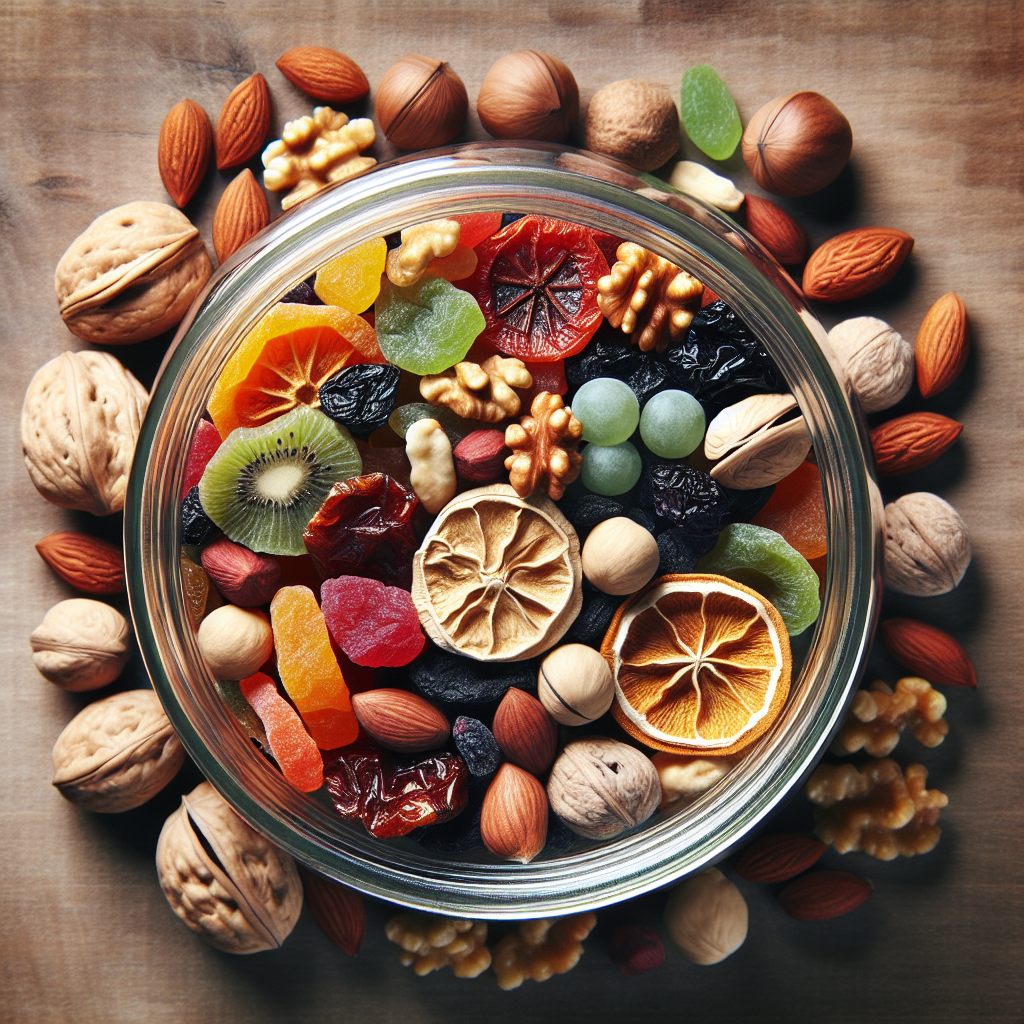
In order to ensure long-term survival, it is crucial to implement the best food storage practices. This article will explore and provide valuable insights into the most effective methods for storing food for extended periods of time. By understanding the importance of proper food preservation techniques, you will be equipped with the knowledge needed to ensure a reliable food supply in times of emergencies or uncertain circumstances. Discover the essential tips and strategies to maintain the quality, nutrition, and safety of stored food, enabling you to confidently navigate any long-term survival situation.
Choosing the Right Containers
When it comes to selecting containers for long-term food storage, there are several factors to consider. The material of the container is an important aspect to look into. Opt for food-grade containers that are made of materials such as high-density polyethylene (HDPE) or polypropylene (PP). These materials are durable, lightweight, and resistant to moisture and pests. Additionally, ensure that the containers are airtight to prevent the entry of air, moisture, and pests.
Durability is another important factor to consider when choosing containers for long-term food storage. Look for containers that are sturdy and can withstand various environmental conditions. This includes withstanding temperature fluctuations, impact, and being stackable. Containers that are designed for long-term food storage should be able to maintain their integrity over an extended period.
Size and shape are also important considerations when choosing containers. Opt for containers that are of appropriate size for your storage needs and available storage space. Consider the amount of food you plan to store and choose containers that can accommodate different quantities. Additionally, look for containers with a shape that allows for efficient stacking and utilization of storage space.
Proper Storage Conditions
Maintaining proper storage conditions is essential for long-term food storage. Temperature is a crucial factor to consider, as it can greatly impact the shelf life of food. The ideal temperature for most food items is between 50-70°F (10-21°C). Avoid storing food in areas where the temperature fluctuates significantly, such as garages or attics, as this can accelerate spoilage.
Humidity levels should also be taken into account. Excessive moisture can lead to the growth of mold and bacteria, causing food to spoil. Aim for a humidity level of around 15-20% in your storage area. If necessary, use dehumidifiers or moisture-absorbing materials to maintain the ideal humidity level.
Light exposure can deteriorate the quality of stored food over time. Foods that are sensitive to light, such as grains and oils, should be stored in opaque containers or in a dark storage area. This helps to prevent the degradation of nutrients and the development of off-flavors.
Pest control is crucial for maintaining the integrity of your food storage. Keep your storage area clean and free from pests. Regularly inspect containers for signs of pest infestation and take necessary measures to control and prevent any issues. Consider using pest-proof containers or adding additional measures such as traps or repellents to protect your stored food.
Stocking Essential Food Groups
When preparing for long-term survival, it is important to stock a variety of essential food groups. Grains and cereals are excellent staples to store, as they are a great source of carbohydrates and provide a good source of energy. Consider stocking up on items such as rice, oats, wheat, and cornmeal.
Legumes and beans are high in protein and provide essential nutrients. Stock up on items such as lentils, chickpeas, black beans, and kidney beans. These can be versatile ingredients in a variety of meals.
Dried fruits and vegetables are great for adding flavor and essential nutrients to your meals. Consider stocking items such as dried berries, apples, carrots, and peas. These can be used in a variety of dishes or enjoyed as a healthy snack.
Canned goods are convenient and have a long shelf life. Stock up on canned fruits, vegetables, soups, and meats. These can provide a quick and easy meal option during emergencies.
Meat and protein sources are important for a balanced diet. Consider storing freeze-dried meats, canned fish, and alternative protein sources such as tofu or seitan. These can provide a good source of protein during long-term survival situations.
Powdered milk and dairy products can be a great addition to your food storage. These can be used for cooking, baking, or reconstituting into milk. Consider stocking up on powdered milk, powdered cheese, and other dairy-based products.
Cooking essentials such as oils, flour, sugar, and salt should also be included in your food storage. These items are versatile and can be used in a variety of recipes.
Condiments and spices can greatly enhance the flavor of your meals. Stock up on items such as salt, pepper, garlic powder, and various spices. These can add variety and taste to your long-term survival meals.
Using Oxygen Absorbers
Oxygen absorbers are an effective method for extending the shelf life of food and preventing spoilage. These small packets contain iron powder, which absorbs oxygen from the surrounding environment. By reducing oxygen levels, the growth of bacteria, mold, and other microorganisms is slowed down.
To use oxygen absorbers, ensure that your food is properly packaged in airtight containers. Place the appropriate number of oxygen absorbers in each container, depending on the size and type of food. The absorbers will work by removing the oxygen present in the container.
There are several benefits to using oxygen absorbers for long-term food storage. They help to preserve the quality and nutritional value of the food, as oxygen can degrade vitamins and minerals. Additionally, they prevent the growth of mold and bacteria, reducing the risk of foodborne illnesses. Oxygen absorbers also help to maintain the flavor, texture, and appearance of the stored food.
Rotation and Labeling
Proper rotation and labeling of food storage containers is essential for maintaining freshness and preventing waste. The first-in, first-out (FIFO) method should be used, where the oldest food items are used or consumed first. This ensures that the stored food is constantly being rotated and prevents items from expiring or spoiling.
Each storage container should be properly labeled with the contents and the date of storage. This helps to easily identify the items and track their shelf life. It is important to regularly check for expiration dates and discard any expired or spoiled food.
Maintaining a storage inventory is essential for efficient management of your food stockpile. Keep a record of the quantities, types, and dates of the items in your storage. This allows you to easily track your stock and plan for replenishment when necessary.
Regular Inspection and Maintenance
Regular inspection and maintenance of your food storage is vital for ensuring the quality and safety of your stored items. Inspect containers for signs of spoilage, such as mold, insects, or foul odors. If any signs of spoilage are detected, remove and discard the affected items immediately.
Monitor storage conditions, including temperature and humidity levels. Make necessary adjustments as needed to maintain optimal storage conditions. This may include using temperature-controlled storage areas or adding moisture-absorbing materials.
Regularly check containers for any damage or compromise. Containers that are cracked, dented, or showing signs of wear should be replaced. Damaged containers may allow for the entry of air, moisture, and pests, compromising the integrity of the stored food.
Replenishing stock is an important aspect of maintaining a long-term food storage. Keep track of the quantities of items being used and plan for replenishment accordingly. This ensures that your supply is constantly updated and fresh.
Emergency Water Storage
Water is a critical resource for survival and should be included in your emergency preparedness plan. Determine your water storage needs by considering factors such as the number of people in your household and the expected duration of the emergency.
Choose appropriate water storage containers that are designed for long-term storage. Containers should be made of food-grade material, such as high-density polyethylene (HDPE) or polypropylene (PP). Ensure that the containers are clean and free from contaminants before filling them with water.
Water purification methods should also be considered for long-term survival situations. Invest in water filters, purification tablets, or other suitable methods to ensure that stored water is safe for consumption. Regularly rotate and replenish stored water to maintain its freshness and quality.
Avoiding Common Food Storage Mistakes
To avoid common mistakes in food storage, it is important to be aware of some key practices. Storing items with strong odors together can result in cross-contamination and impact the taste and quality of the food. Separating items with strong odors, such as spices or onions, can help prevent this.
Ignoring temperature fluctuations can accelerate spoilage and reduce the shelf life of stored food. Make sure to store your food in a cool and consistent environment to maintain its quality and safety.
Proper packaging is crucial for long-term food storage. Using airtight containers and removing excess air can prevent the growth of bacteria and extend the shelf life of the food.
Individual dietary needs should be taken into consideration when planning and stocking food items. If you or someone in your household has specific dietary requirements or restrictions, ensure that your food storage includes suitable options.
The location of your stockpile is also important to consider. Choose a cool, dry, and secure area for your storage. Avoid areas prone to temperature fluctuations, humidity, pests, or potential damage.
Managing Long-Term Food Storage
Creating a food storage plan is essential for managing your long-term survival needs. Determine the quantity of food you need to store based on the number of people in your household and the duration of the emergency. Consider factors such as daily caloric intake and nutritional needs when calculating storage quantities.
Regularly reevaluate and adjust your storage needs as necessary. Take into account changes in household size, dietary requirements, or potential long-term survival scenarios. Flexibility and adaptability are key when managing long-term food storage.
Developing a meal plan can help ensure that your stored food is utilized efficiently and effectively. Plan meals based on the items in your storage, taking into consideration nutritional balance and variety. This can also help with rotation and avoiding wastage.
Considering Special Dietary Requirements
In long-term survival situations, it is important to consider any special dietary requirements or restrictions. Food allergies and intolerances should be taken into account when stocking food items. Ensure that your storage includes suitable alternatives or options for individuals who have specific dietary needs.
Vegetarian or vegan diets should also be accommodated in your food storage plan. Stock up on plant-based protein sources such as legumes, beans, and tofu. Consider storing a variety of fruits, vegetables, and grains to provide a well-rounded vegetarian or vegan diet.
For individuals with gluten or lactose intolerances, gluten-free and lactose-free options should be included in your food storage plan. Stock up on gluten-free grains, dairy alternatives, and other suitable options that meet specific dietary needs.
Specific medical conditions should also be taken into consideration when planning and stocking food items. People with diabetes, for example, may require specific food choices or dietary restrictions. Ensure that your food storage includes appropriate options that cater to specific medical needs.
By following these best practices for long-term food storage, you can be prepared for emergencies and ensure the availability of safe and nutritious food in times of need. Properly choosing containers, maintaining optimal storage conditions, rotating and labeling, regular inspection and maintenance, and considering special dietary requirements are all crucial steps in ensuring successful long-term survival food storage. Remember to regularly review and update your food storage plan to adapt to changing circumstances and ensure that you are well-prepared for any situation.






